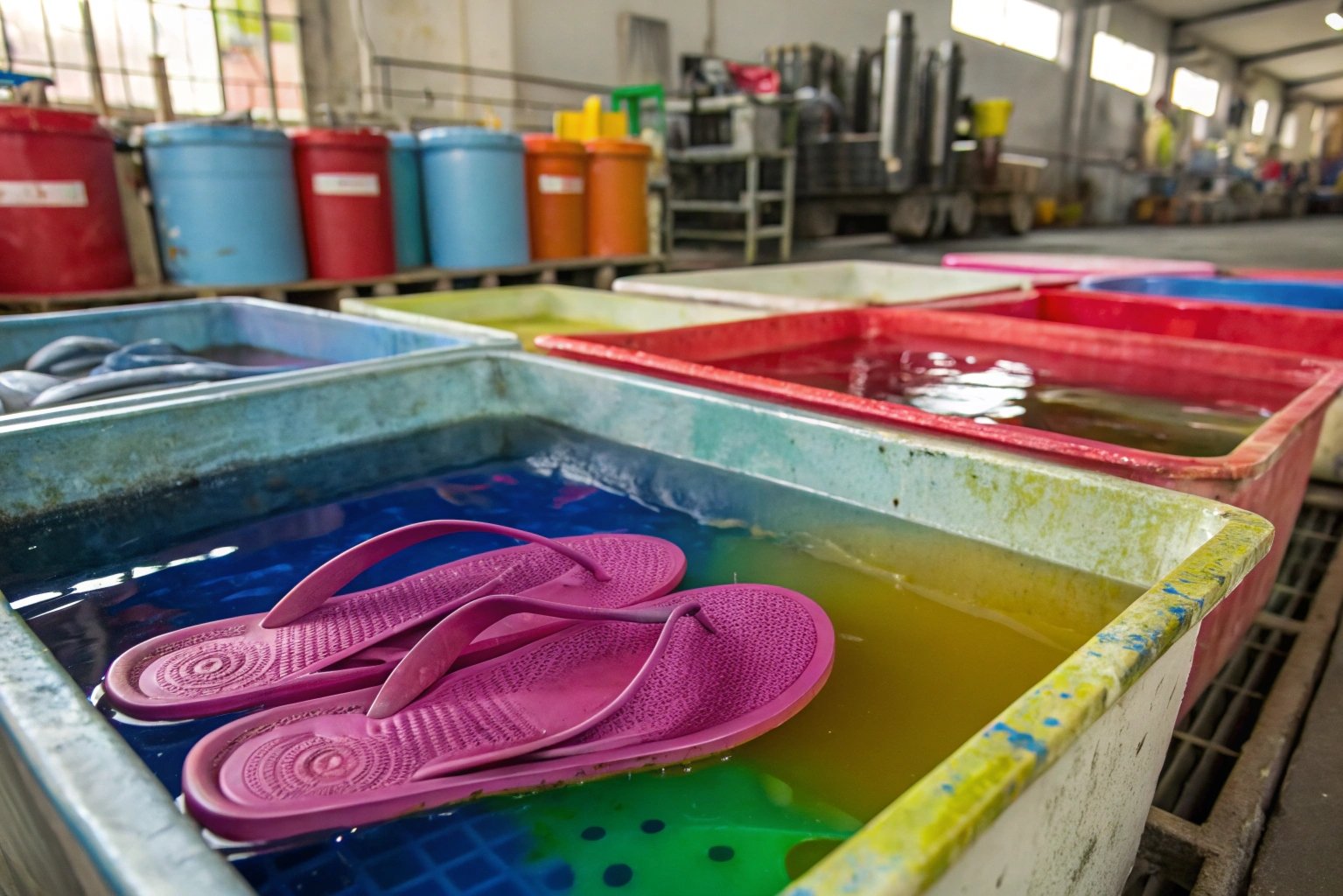Are your slippers looking dull? Do you want to give them a vibrant new look? Don’t worry, there are several dyeing techniques for plastic slippers that can help.
Dyeing plastic slippers involves three main methods: masterbatch dyeing, surface coating, and overall dyeing. Each method offers different levels of color penetration, durability, and suitability for various types of plastics.

So, let’s explore the options to find what works best for you and your favorite pair of slippers.
What are the three methods of dyeing?
Are you curious about how to add color to your plastic slippers? There are actually three different ways to do it.
The three main methods are: masterbatch dyeing, surface coating, and overall dyeing. Each technique offers distinct advantages and is suitable for different production scales and quality requirements.

Let’s break down these three dyeing methods for plastic slippers.
| Dyeing Method | Description | Advantages | Disadvantages |
|---|---|---|---|
| Masterbatch Dyeing | Adding concentrated color pellets (masterbatch) to the plastic material during the molding process. | Uniform color distribution, durable, cost-effective for large production runs. | Requires specific equipment, less flexible for small batches. |
| Surface Coating | Applying a layer of colored coating to the surface of the slipper after it’s molded. | Easy to implement, suitable for small batches, allows for intricate designs. | Less durable, prone to scratching and peeling, may affect flexibility. |
| Overall Dyeing | Submerging the entire slipper in a dye bath to permeate the plastic material. | Deep color penetration, good for porous plastics, relatively simple process. | Can be uneven, may affect material properties, limited color choices. |
Masterbatch dyeing involves mixing concentrated color pellets with the raw plastic before it’s molded. This ensures the color is consistent throughout the slipper and is best for large-scale production. Surface coating, on the other hand, is like painting the slipper. It’s easier for small batches and allows for more detailed designs, but the color can scratch off over time. Overall dyeing means soaking the slipper in a dye bath. This gives a deep color but might not be as even and can change the slipper’s texture.
As someone who has been in the slipper manufacturing business for years, I’ve seen firsthand how each method impacts the final product. For large orders, masterbatch dyeing is our go-to for its consistency and cost-effectiveness. We once had a customer who wanted a very specific shade of blue for their branded slippers. We used masterbatch dyeing to achieve the exact color match across thousands of pairs. Surface coating is great for smaller, more customized orders, but we always make sure to use a high-quality coating to prevent peeling.
Conclusion
There are a few different ways to dye your plastic slippers. Choosing the right method depends on the result you want.

